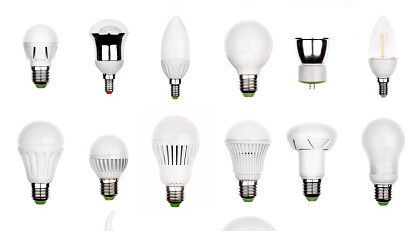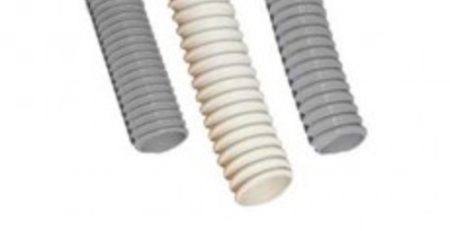A guide to understanding the unit of measurement for electrical current and its 5 types
A guide to understanding the unit of measurement for electrical current and its 5 types

Contents
Electric current is one of the most important elements measured in electrical engineering. It is used to measure the flow of electrons between two points in a circuit, and is usually measured in units such as the ampere (A).
Different units of electrical current are used to represent different levels of intensity and strength of electrical current, and each unit has its own characteristics that make it suitable for certain types of applications. In this article, we will discuss the unit of measurement for electrical current, what it represents, and its use cases in electrical engineering.
A guide to understanding the unit of measurement for electrical current and its 5 types
What is the unit of measurement for electrical current?
First, electric current is a measure of the rate of flow of electrical charge through a conductor. The most common unit of measurement for electrical current is the ampere (A). This unit is used to measure the amount of electricity flowing through a circuit in one second. Other units of electrical current measurement include:
A guide to understanding the unit of measurement for electrical current and its 5 types
- Milliampere (mA) = one thousandth of an ampere, (1 mA = 0.001 amp)
- Microampere (µA) = one millionth of an ampere, (1µA = 0.000001A)
- Kiloampere (kA) = (1 kiloampere = 1000 amps)
- (abA) Abampere = ten amperes, (1abA = 10A)
Different types of electrical current measuring unit
Electric current is an important concept in electrical engineering and can be measured in different ways. You must know the different types and choose the appropriate unit of electrical current measurement for the work you will be doing. Types of electrical current measuring units include:
Unit of measurement for electrical resistance (Ω)
Electrical resistance is a measure of how well a material resists the flow of electric current. It is an important concept to understand when dealing with electricity, because it affects the amount of energy that can be conducted through a circuit. The standard unit for electrical resistance is the ohm (Ω) and is calculated as (potential difference ÷ current = ohm.) The ohm is named after the German physicist Georg Ohm, who first defined it in 1827. Other units of electrical resistance include:
A guide to understanding the unit of measurement for electrical current and its 5 types
- Kilohm (kΩ) = (1 kilohm = 1000 ohms)
- Megaohm (MΩ) = million ohms, (1MΩ = 1,000,000 Ω)
- Gigaohms (GΩ) = billion ohms, (1GΩ = 1,000,000,000)
- Microohm (µΩ) = one millionth of an ohm, (0.000001 = 1Ω)
- Milliohm mΩ (cubic meter) = one thousandth of an ohm, (1 cubic meter = 0.001 Ω)
Power unit (W)
The standard unit of power is the watt (W) in English. The watt is one of the most important units in electricity and is used in many applications such as calculating electricity bills, measuring electrical energy, and determining the amount of energy consumed by the device. It has become an international standard unit for measuring energy and is widely used in various countries. The Watt was named after Scottish engineer James Watt for his contributions to the development of steam engines. Other power units include:
- Kilowatt (kWh) = thousand watts, (1 kilowatt = 1000 watts)
- Megawatt (MW) = million watts, (1 MW = 1,000,000 watts)
- Gigawatt (GW) = billion watts, (1 GW = 1,000,000,000 watts)
- Milliwatt (mW) = (megawatt), one thousandth of a watt (1 megawatt = 0.001 watt)
- Microwatts (µW) = one millionth, (1 watt = 0.000001)
- Horse Power = commonly used in engine power measurements, (1 HP = 746 watts)
Voltage measurement unit (V)
The standard unit for potential difference, also known as voltage, is the volt (V). It is the unit of measurement for electric potential difference and electromotive force in the International System of Units (SI). It represents the amount of energy per unit charge required to move a test charge between two points in an electric field. Other units of potential difference include:
- Millivolt (mV) = one thousandth of a volt, (0.001 volt = 1mV)
- Microvolt (µV) = one millionth of a volt, (1µV = 0.000001)
- Kilovolt (kV) = thousand volts, (1000 volts = 1kV)
- Megavolt (MV) = million volts, (1MV = 1,000,000)
Unit of measurement for electrical energy (kWh)
The most common unit of measurement for electrical energy is the kilowatt-hour (kWh). This unit is used to measure the amount of energy in any electrical system, and represents the amount of energy transmitted or used in the circuit, or consumed by the device during a certain period of time.
Utility companies also use it to calculate their customers’ electricity bills. The kWh unit helps us understand how much energy we use and how much it will cost us in terms of money. It also helps us compare different energy sources and determine which will be more cost-effective in the long term.
Electricity measuring device
These are some of the devices that are widely used by electricians:
1) Amper Meter
It is a basic device for measuring the strength of electric current. It is a device used to measure the current flowing through an electrical circuit. It can be used to measure both alternating and direct current, as well as voltage and resistance in a circuit. Using an ammeter, a person can analyze the power consumption of various devices in order to identify problems or optimize their energy use. Electricians also use measuring devices to diagnose and troubleshoot electrical systems.
Potentiometer resistance is usually measured using an ampere meter, which is an electrical instrument used to measure resistance in a circuit. An ohmmeter applies a small current to the circuit and measures the voltage drop across the circuit to determine resistance. Resistance is displayed in ohms on the electronic ohmmeter’s display.
2) Voltmeter
It is an instrument used to measure voltage in an electrical circuit. The unit of measurement for voltage in a circuit is the volt (V), which is the unit of electric potential difference and electromotive force in the International System of Units (SI). A voltmeter is connected in parallel with the circuit to measure voltage. The device measures voltage by measuring the electrical potential difference between two points in the circuit. It can be used to measure direct current (DC) and alternating current (AC) voltage.
It can be used to test the electrical system of a home or car, as well as to troubleshoot electronic devices. A voltmeter can also be used to check a device’s battery life or to determine if there is any type of power surge in the area. There are other types of devices that are used to measure the strength or intensity of an electric current, such as: measuring electric current with amphometer, ohmmeter, wattmeter, and millimeter. We will talk about these types in detail in another article.
Benefits of using a unit of electrical current measurement
There are many benefits to using a unit for measuring electrical current, including ensuring accuracy to simplify calculations related to electrical current, which helps the specialist understand and compare results. This helps him improve efficiency in various systems such as generating and monitoring electrical energy, its flow and detecting any abnormal conditions such as overload. For voltage, short circuit or power loss, in order to identify potential hazards and achieve safety.
How to calculate the unit of measurement for electricity current?
Electric current is a measure of the rate of flow of electrical charge through a conductor. It is measured in amperes (A) and can be calculated as the voltage applied to it divided by its power. Therefore, if you know the voltage and power of the material, you can calculate the current using this formula: Current = Voltage ÷ Power. Knowing how to correctly calculate electrical current is important for any electrical engineer or technician working in the electrical field.
Here is this data as an example: To calculate the unit of electrical current, you need to use the simple formula of power (P) divided by voltage (V) meaning (Power ÷ Volt). For example, if you have a 2500 watt water cooling device that operates at a voltage of 220 volts, the power or amperage of this device can be calculated as follows (2000 ÷ 220), so the result will be the equivalent of 9.09 amps.
What is the symbol for an electrical quantity?
The electrical quantity is considered one of the most important concepts in the field of electricity and electronics. Each type of unit for measuring electrical current has a symbol and a symbol for the unit of measurement. In the table, learn about the standard symbols for the most commonly used electrical quantities:
| Quantity name in Arabic | Name in English | measruing unit | Quantity code | Unit symbol |
| electric current | Electrical Current | Ampere | I (i) | A |
| Electrical voltage | Voltage | Volt | V | V |
| Electrical capacity | Power | Watt | P | W |
| electrical resistance | Electrical Resistance | Ohm / Ohm | R | Oh |
| Periodic time | Period Time | Second | T | Sec |
Electric current is one of the most important concepts in electrical engineering. Electricity is measured using different units, depending on its application and environment. The most common units of measurement for electric current are amperes (A), milliamperes (mA), and microamperes (μA).
The ampere (A) is the standard unit for measuring electric current. It is the basic unit of electric current in the International System of Units (SI) and is used to measure the flow of electric charge in a circuit. The definition of one ampere is the flow of one coulomb of charge per second.
If you have any inquiry, please contact us freely and we will be happy to serve you.

Jezli website for purchasing electrical appliances
When we say Jeezly website, we are talking about one of the most famous Arab websites that was able, in a very short period of time, to achieve a very large demand for purchases from it by people from various parts and sectors of the Arab world.
On the Jeezly website, you will find a joint look and all the products that you may need in your home, starting with those for kitchens or bathrooms, but even those for gardens, you will find them on this wonderful site.
So, if you were lost before and did not know where to go to buy your products on the Internet, now you have the perfect solution, and all you have to do is go to the Jezli website and start choosing the products you want.
 What are the features of Jeezly ?
What are the features of Jeezly ?
Since we are talking about a site that is preferred by many people around the world, there is no doubt that it is a site full of various features and characteristics. Therefore, we have decided to devote our next paragraph to pointing out the most prominent features of the Jezli site.
One of the most prominent features of the site is the proportionality of prices. On the Jeezly website, you do not have to worry about the imaginary prices of the products, as is the case with most sites that display their products on the Internet.
The price of delivering products is very reasonable and not expensive, and the site accepts delivery to various countries, without forgetting that it accepts free shipping on some products.
One of the advantages of the site is also the high quality of its products, as it is impossible to find a poor quality product. Rather, the Jezli website deals with major companies, Philips, for example, and other famous brands, so you must remove from your mind the idea of the poor quality of one of the products. Another advantage of the site is that it does not specialize in one type of product, but rather you will find various types of products on it, for example, electrical appliances, hand tools, mechanical devices, paints, packages for establishing apartments, and many other types.
Jeezly website also accepts what is known as the shopping cart, which makes it easy for you to filter the products you want to buy and put them in one package in order to be able to pay with the click of a single button.
Accepts multiple payment methods.
We are pleased that you visit our social media pages, where we publish exclusive offers on our website.
Our Facebook page is here .
Our Twitter account is here .








![قواطع مقولبة شنايدر [ NSX ] 50 كيلو 3 فاز ميكرو 6.3 A 630N](https://gahzly.com/wp-content/uploads/2019/10/قواطع-مقولبة-شنايدر-nsx-50-كيلو-3-فاز-ميكرو-63-a-630n-450x231.jpg)




Leave a Reply
You must be logged in to post a comment.